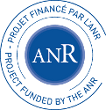Results
The DRAO project allowed us to make significant progress over our objectives of understanding how people draw and helping professional artists and novices alike.
- Understanding how people draw
We first performed an extensive survey of the art literature to identify specific techniques to draw shape, material and lighting effects. We complemented this survey with interviews in an automotive design studio and in an illustrator studio. Finally, we ran an observational study to better understand how people use drawings and physical prototypes to perform casual design tasks.
- Teaching and guidance
Based on our observations on how people draw shape, we developed an interactive drawing tool that provides automated guidance to practice traditional drawing-by-observation techniques. Our tool extracts constructions lines from a user-provided photograph and generates visual feedback to help users understand their mistakes. We also proposed a system that augments traditional pen and paper with a projector to enable professional illustrators to zoom into parts of their drawings and work at different levels of detail on paper.
- Drawing illumination and materials
Our observations on how to draw materials inspired us to propose a compact shade tree representation to automatically generate stylized depictions of materials in vector graphics. This representation encapsulates the creation of vector primitives (paths, gradients) that artists routinely use to convey material effects. Thanks to our approach, inexperienced users can quickly turn a line drawing into a fully colored illustration. We also proposed a user-assisted method to convert bitmap images into vector graphics with editable layers, which allows a variety of edits, such as modifying the shape of highlights, adding texture to an object or changing its diffuse color. Finally, we introduced a new numerical solver to generate smooth color gradients controlled by a few Diffusion Curves. This approach relies on an adaptive triangulation to combine the ease of use of vectorial curves with the speed and accuracy of finite element representations.
- Drawing 3D shapes
We proposed several algorithms to estimate normal fields and 3D shapes from design drawings. These algorithms leverage specific construction lines that designers draw to convey surface curvature. The first algorithm takes a single vector drawing of the shape as input, while the second method works from a bitmap drawing and is robust to sketchy lines made of many overlapping strokes. We also described an algorithm that exploits the structure of an existing scene to interpret architectural drawings in context.
- From drawings to physical prototypes
Our interviews with designers revealed the increasing use of digital fabrication in the design process. While we did not consider this workflow in our proposal, we explored the use of drawings as support for the creation of physical prototypes. In particular, we developed a system to help hobbyist create unique pieces of jewelry from drawings.



 Menu
Menu See also
See also Contact
Contact